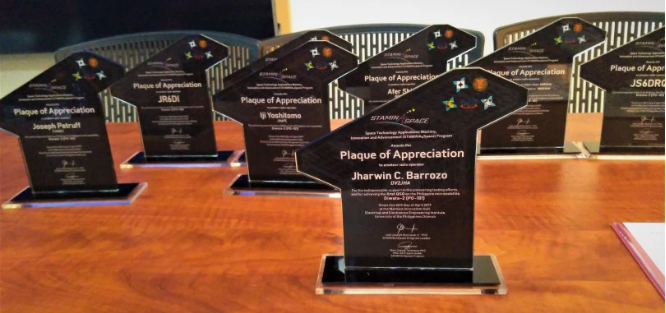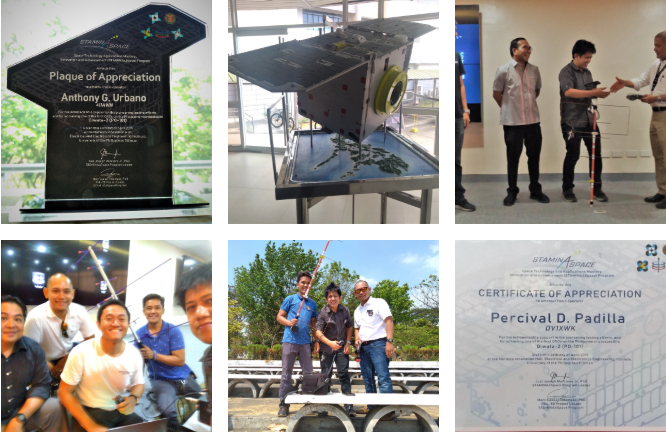A group of amateur radio operators from the Philippine Amateur Radio Association (PARA) worked with the engineers of STAMINA4SPACE Program (formerly named as the PHL-MicroSat Program) to test the full capabilities of DIWATA2’s Amateur Radio Unit. The task involves testing the receiving (RX) and transmitting (TX) capabilities of the satellite both for voice mode and data mode. It also includes determining the kinds of antennas, the clarity of voice communication, and how much power is actually needed to access the satellite. The testing effort lasted for two months, usually requiring operators to stay up until 1 am just to track the satellite at it passes over the Philippines, using a number of radio equipment and satellite antenna. DU1EV Eduardo Valdez, president of PARA and president of AMSAT Philippines, coordinated the frequency assignment of the satellite and its call sign DW4TA. The first successful contact made through the DIWATA2 microsatellite was on March 01, 2019, 1:27 AM, local time, between DV2JB Jharwin Barozzo (Dagupan, Pangasinan) and STAMINA4SPACE engineers 4I1DIT JP Almonte and Lorenzo Sabug operating as 4I1BBE (UP Diliman, Quezon City).

Plaques of appreciation from STAMINA4SPACE were awarded to the first 10 stations to access DIWATA 2, and certificates issued to those involved in the testing efforts. The AMSAT-PH club call sign DX1O was used as the event’s official call sign.
First 10 Stations to make a successful QSO via DIWATA2 Satellite
For assisting with the testing efforts and achieving one of the firsts QSOs via DIWATA2, special awards were given to
The awards were given on April 26, 2019, at the Electrical and Electronics Engineering Institute Bldg., University of the Philippines, Diliman, Quezon City, through AMSAT Philippines and PARA president Atty. Eduardo Victor Valdez, PHL-50 project leader Dr. Marc Caesar Talampas, and STAMINA4SPACE program leader Dr. Joel Joseph Marciano Jr.

The testing team will continue to assist the STAMINA4SPACE program in monitoring the status of DIWATA2’s Amateur Radio Unit.
To learn how to access the DIWATA2 satellite, head directly to Satellite Communications.
By: